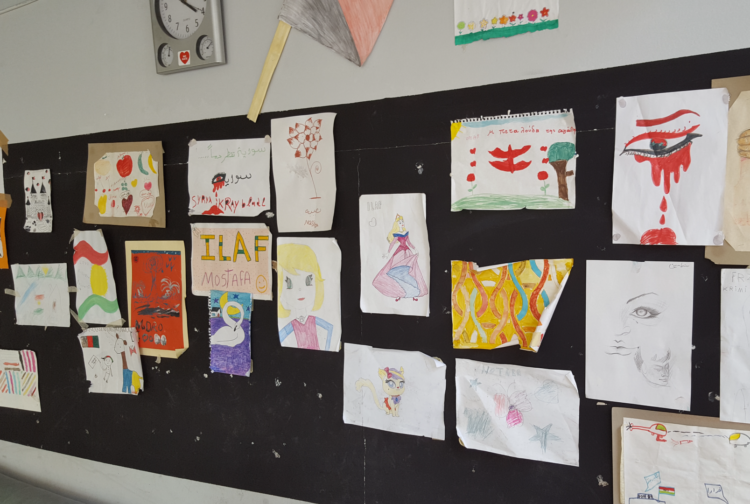As part of the Occupied Refugee/Migrant Housing at Notara 26, a political housing project that since 2015 has provided real answers to the violence and systemic racism of the state and capital, both solidarity supporters and residents of the occupation have, over the years, created various structures and subgroups. These efforts have been part of a process to put into action the political principles of solidarity, self-organisation, mutual aid, and common struggles between locals and migrants. A key element of this process was the ongoing improvement of living conditions for children at Notara 26.
This process hasn’t followed a fixed path; it has always been influenced by the level of participation and commitment from all individuals within the occupation. The most recent restructuring of the children’s structure at Notara 26 took place in 2023, when both children and solidaries involved in the occupation came together to re-define the direction of the children’s structure. Of course, part of this restructuring is rooted in past experiences and lessons learned from similar projects within the Notara 26 collective processes.
Initially, the children’s space was set up to meet the basic needs a child might have: communication with doctors, school registrations, providing school supplies, and helping with homework. In the first few months, as many superficial issues were being handled automatically, the need to get closer to each other and deepen our relationships was always in front of us. To meet this need in a way that reflected the kind of programs we wanted to create, we relied on and continue to rely on libertarian principles that shape relationships, education, and self-education between adults and children. In simple terms: relationships and processes that aren’t governed by the roles and identities of “minors” and “adults,” as defined by dominant social norms, but by an equal and honest connection between people trying to walk together in mutual understanding and respect.
In libertarian education and culture, the child is not seen as an entity simply placed on an uncontrollable path toward adulthood, as dominant education would have it. The child is not defined by the space occupied by the “authority” of the adult, nor is the child viewed as a “blank slate” on which the adult will project their own expectations and demands. On the contrary, in libertarian education, the child is seen as a person with their own emotions, thoughts, preferences, characteristics, and experiences, none of which should be suppressed or shaped to fit the adult’s vision, but should be explored and developed collectively and horizontally. This way, the child gradually develops a sense of autonomy, one of the most important conditions for their emotional and psychological growth.
In our case, through the children’s space at Notara 26 and the way it operates, children develop their autonomy by being encouraged to actively participate in our processes and conversations. They are thus invited, within appropriate frameworks, to be part of decision-making processes regarding many aspects of their lives, starting from the walks, activities, and games that will take place, all the way to choosing lessons and the days we want to study together. Even within the context of lessons, the child is not in a passive state of knowledge absorption, but rather their independence is nurtured both in terms of exercises and assignments, where, over time, the children should feel comfortable and capable in meeting their responsibilities, as well as in the “school” space itself, where we read together in the occupation. Here, we promote the choice for the children to take care of the space, keeping it clean and looking after it collectively.
Wanting children to be autonomous and not passive recipients, we try to avoid being seen as authorities. Instead, we encourage them to question us, so that we can break free from the rigid hierarchical binaries of society that they’re used to, such as parents-children, teachers-students, where they are often placed in a subordinate position. Our goal is to create space for them to develop their own creativity and abilities, outside of these imposed roles.
At Notara 26, a political project that provides housing for refugees and migrants, the majority of people involved in the occupation’s processes speak many different languages. Both at Notara 26 and within our children’s structure, we don’t see cultural and linguistic differences as obstacles, but as factors that enrich the ways we communicate with the children. Building a meaningful relationship with the child allows for the creation of a shared communication code, one that’s genuinely rich, not limited to the rules of just one language, but also includes the spontaneous linguistic and expressive reactions of the children in different situations, in play, in dance, and in the shared moments we have together.
All of the above, along with many small but important actions, moments and processes, make up the children’s structure at Notara 26. Birthday parties and celebrations, walks and playtime, lessons, feedback from the children, discussions about whatever may be on the children’s minds, and many other things are pieces of a mosaic that places at the center of relationships between adults and children the strengthening of the child’s self-image and self-confidence, rather than fostering competition, anxiety and (oppressive) pressure.

